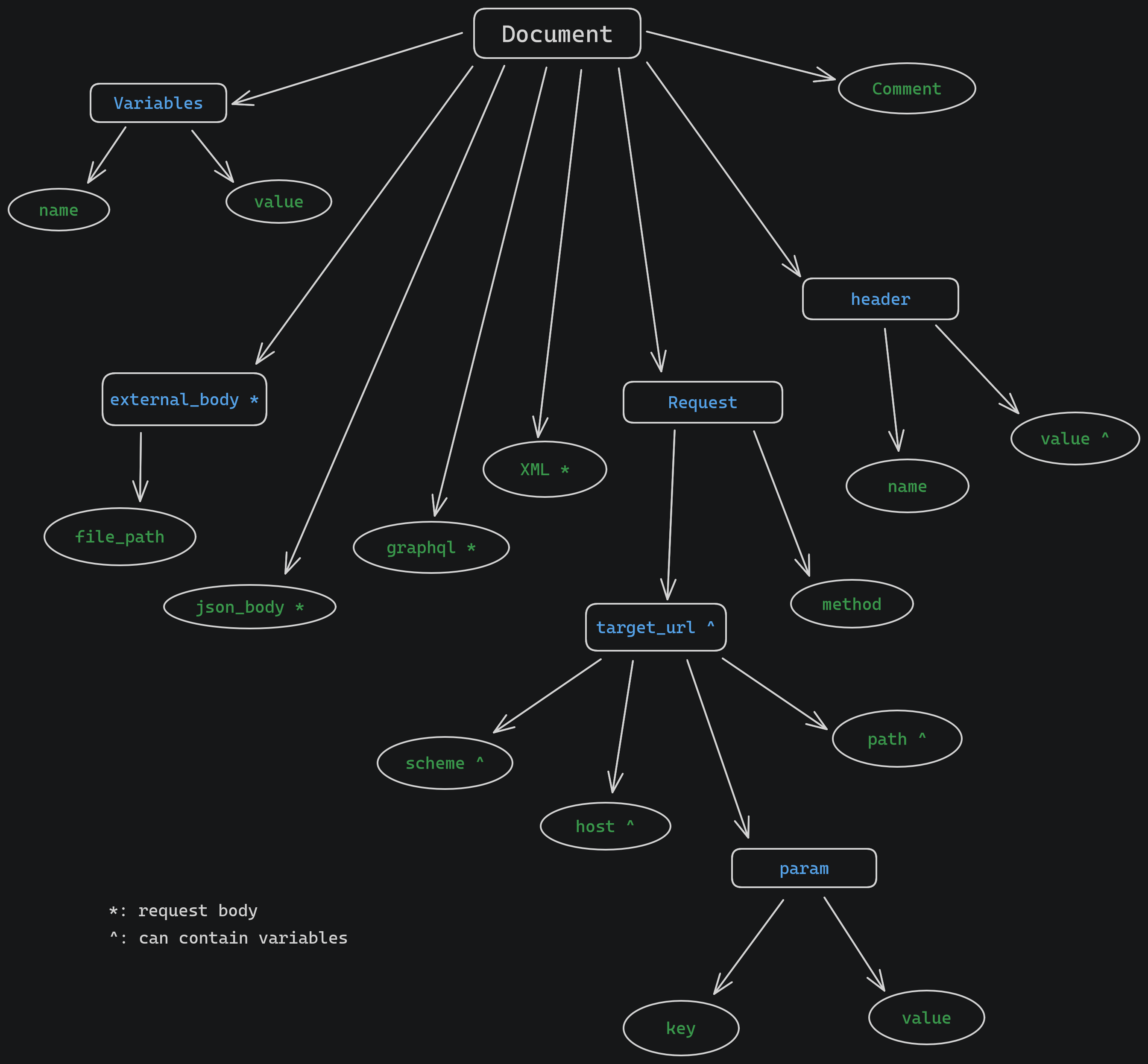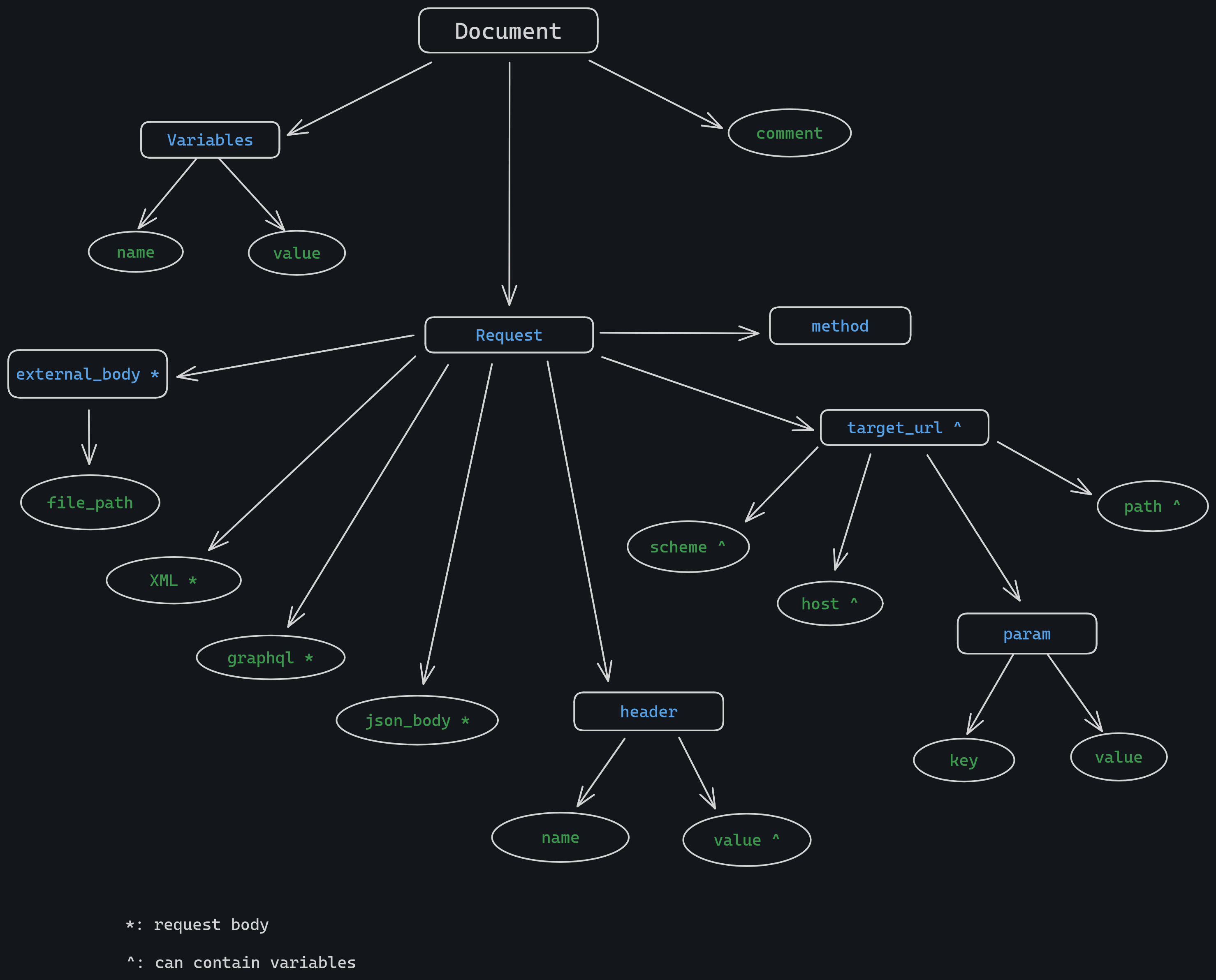HTTP Tree-Sitter Parser Rewrite
It took a little longer than I thought, but here we are. It is time to finally fix and use it for what it has been made for!
Introduction
As you may know, the tree-sitter HTTP parser is what leads the operation of rest.nvim, or well, a part of it (currently).
The parser was written at a time when I didn’t have much knowledge in parsing (yes, I know, it is ironic), it’s time to give it new life and use it for what it was really made for, to do parsing and not just give highlighting to your HTTP documents!
The actual issues
In the past, there has been attempts to use the tree-sitter parser as the parsing engine in
rest.nvim, some of them has been public and some others were experimental. In every of those
attempts, it was a really complex and unpleasant experience that made us drop the progress on this
matter, but why? Let’s take a look at the actual AST (Abstract Syntax Tree) from the tree-sitter
parser to find out!

As you may notice, the tree structure is really poor and not widely tested — I’m ashamed of my own old code, what a surprise.
It is not something like spaghetti code, but something as bad as legacy code — it works, but it is painful to work with. There is no true organization and proper tree branching, and this is what makes working with it an impossible task.
Every branch comes from the document root node, how could we properly detect which header belongs to what request for example? It is a lot of work and being honest, it is not worth the effort. The same thing applies to… all the AST nodes, John McCarthy would be terrified just by watching it!
The new design choices
Now that we have seen the faults in the current parser AST, let’s check out how we could address them!

I think it goes without saying that the change is really noticeable and makes the work much easier, and it also makes the parser much more understandable when inspecting the tree.
Since the core of the parser is the requests, it makes sense to group absolutely everything (except the variables and comments, as they are a children of the root node) within said node. This way we also solve the question from the previous example about how we could identify what belongs to which request.
Now that the parser will be more organized and with a real structure, it can be used efficiently and
easily to perform the parsing and extraction of data that rest.nvim will need to make HTTP
requests for your documents. But wait, these changes are not done yet!
As the changes are implemented, the post will be updated with some markers to keep notes of each
change, and as always in the world of development, there is no ETA but I hope to have quick and
uncomplicated progress. And yes, this is the second step necessary for the rest.nvim rewrite — the first one is in progress as well, and I will make a post about it later :)